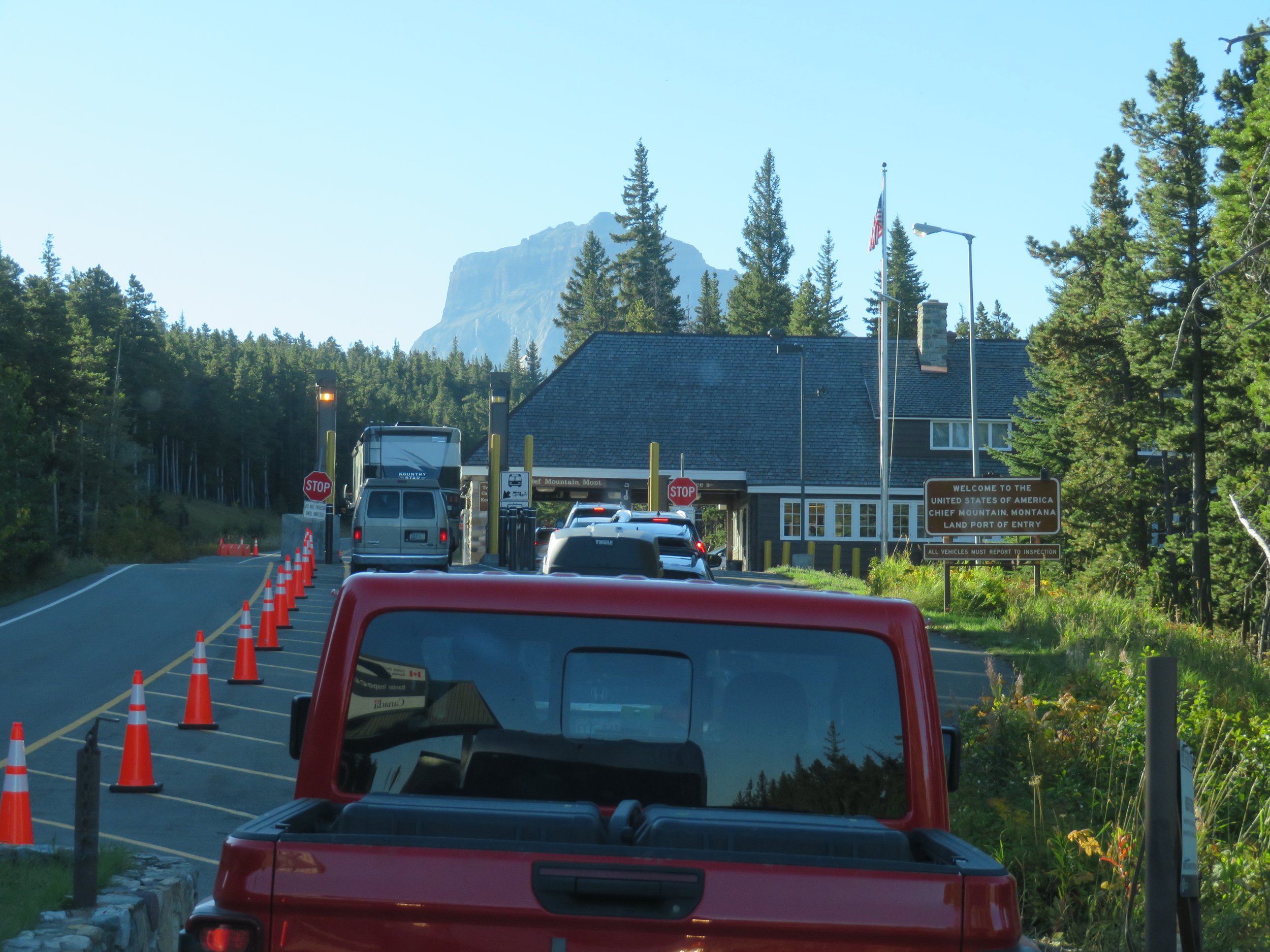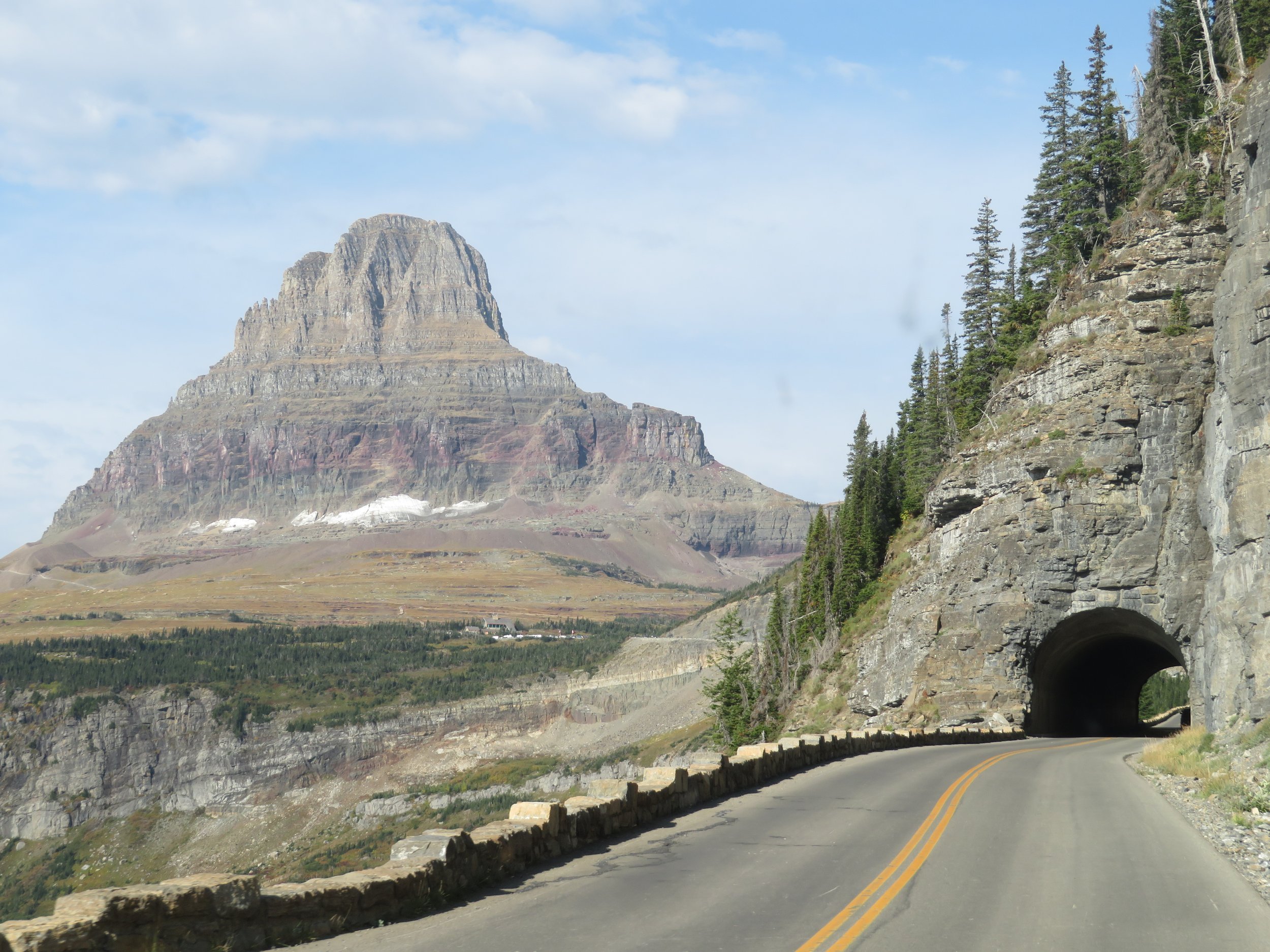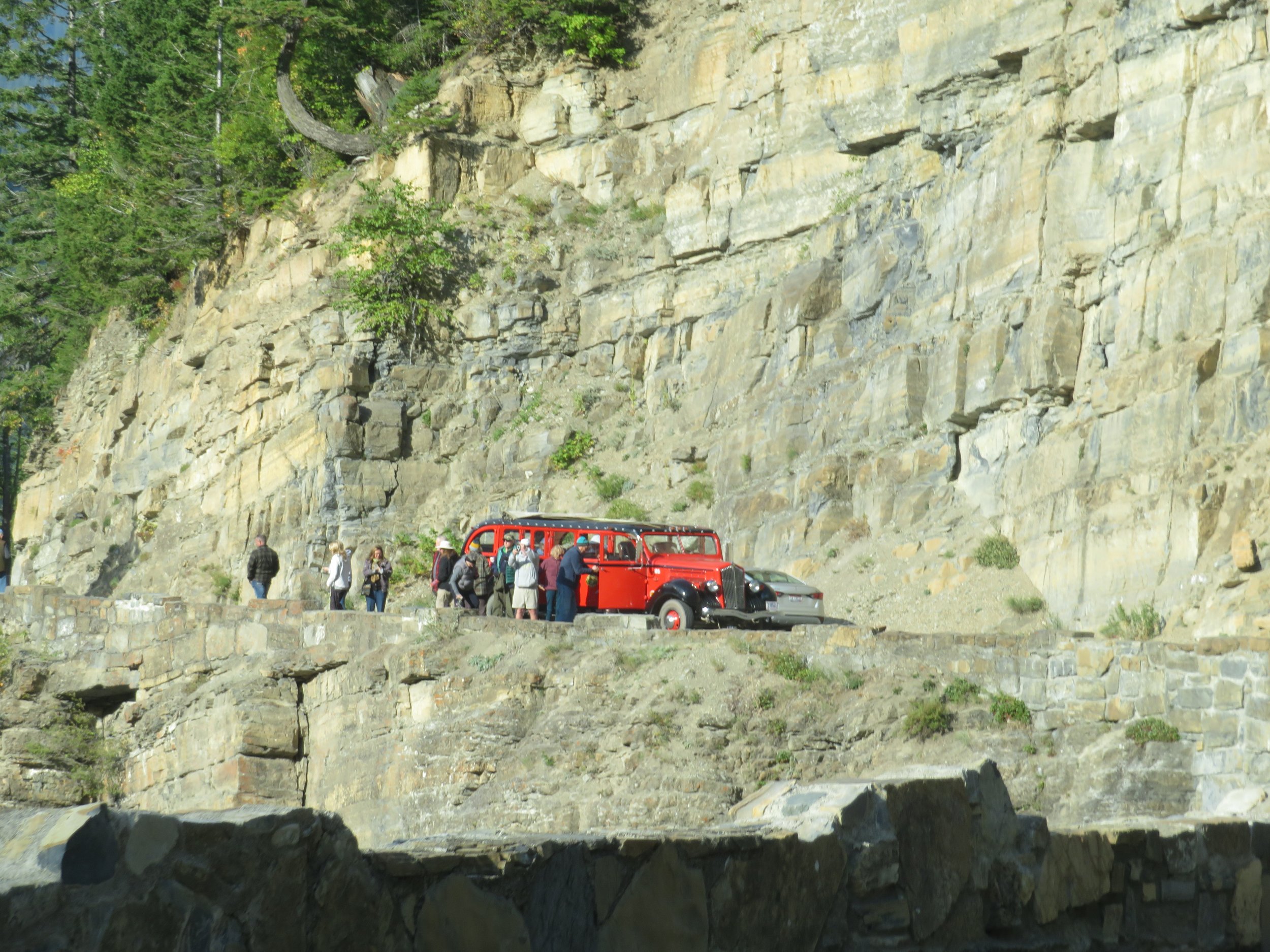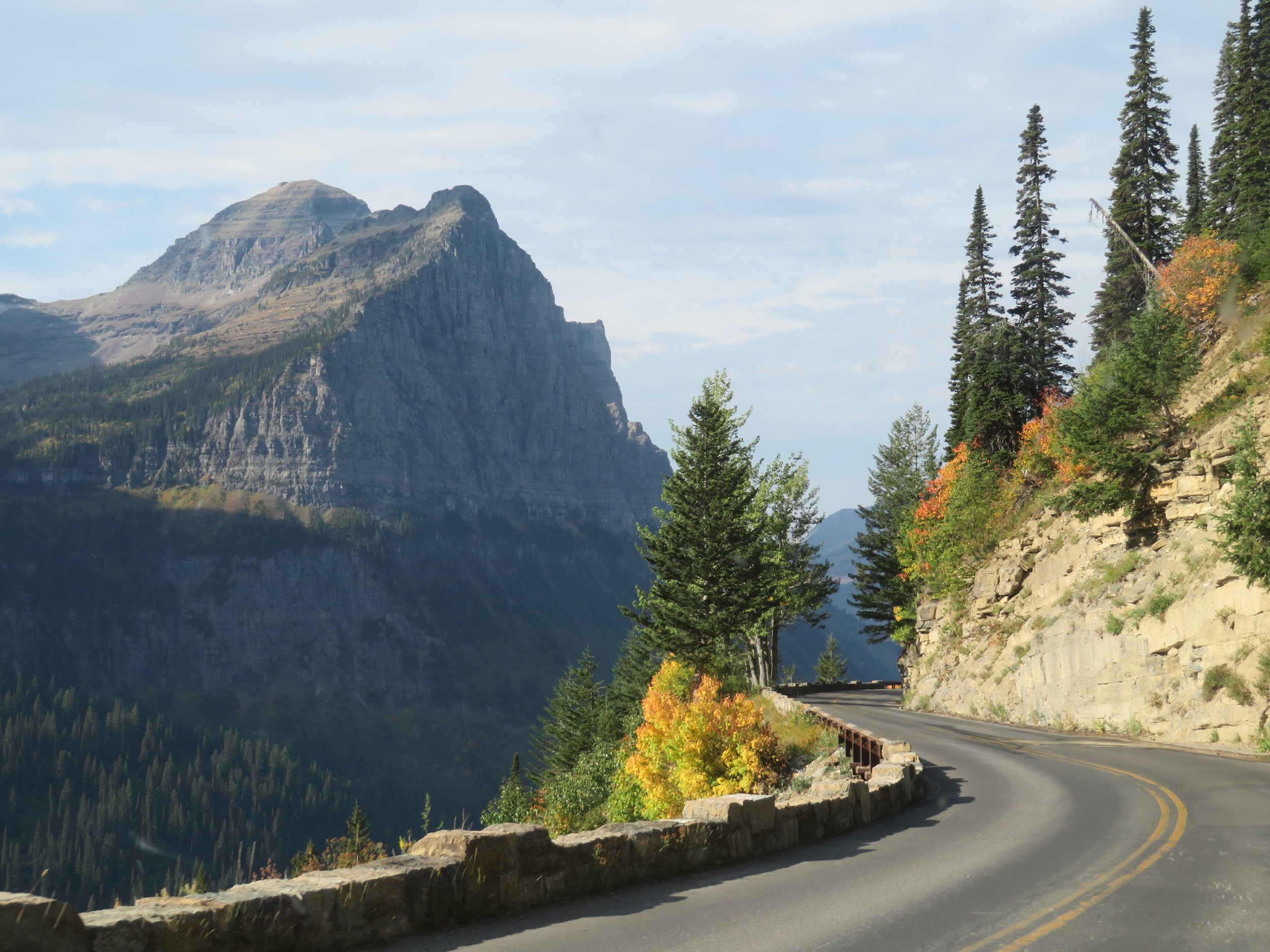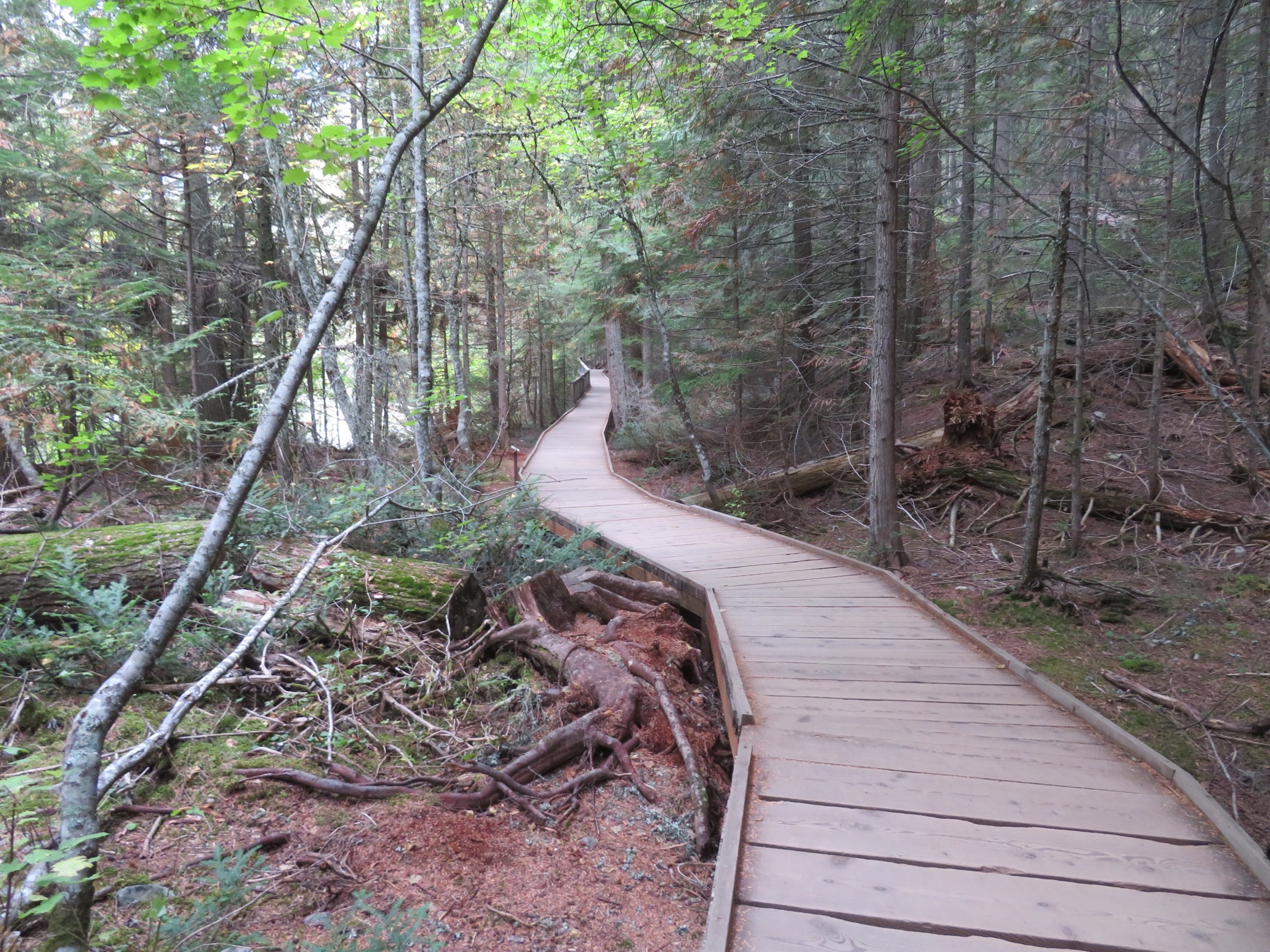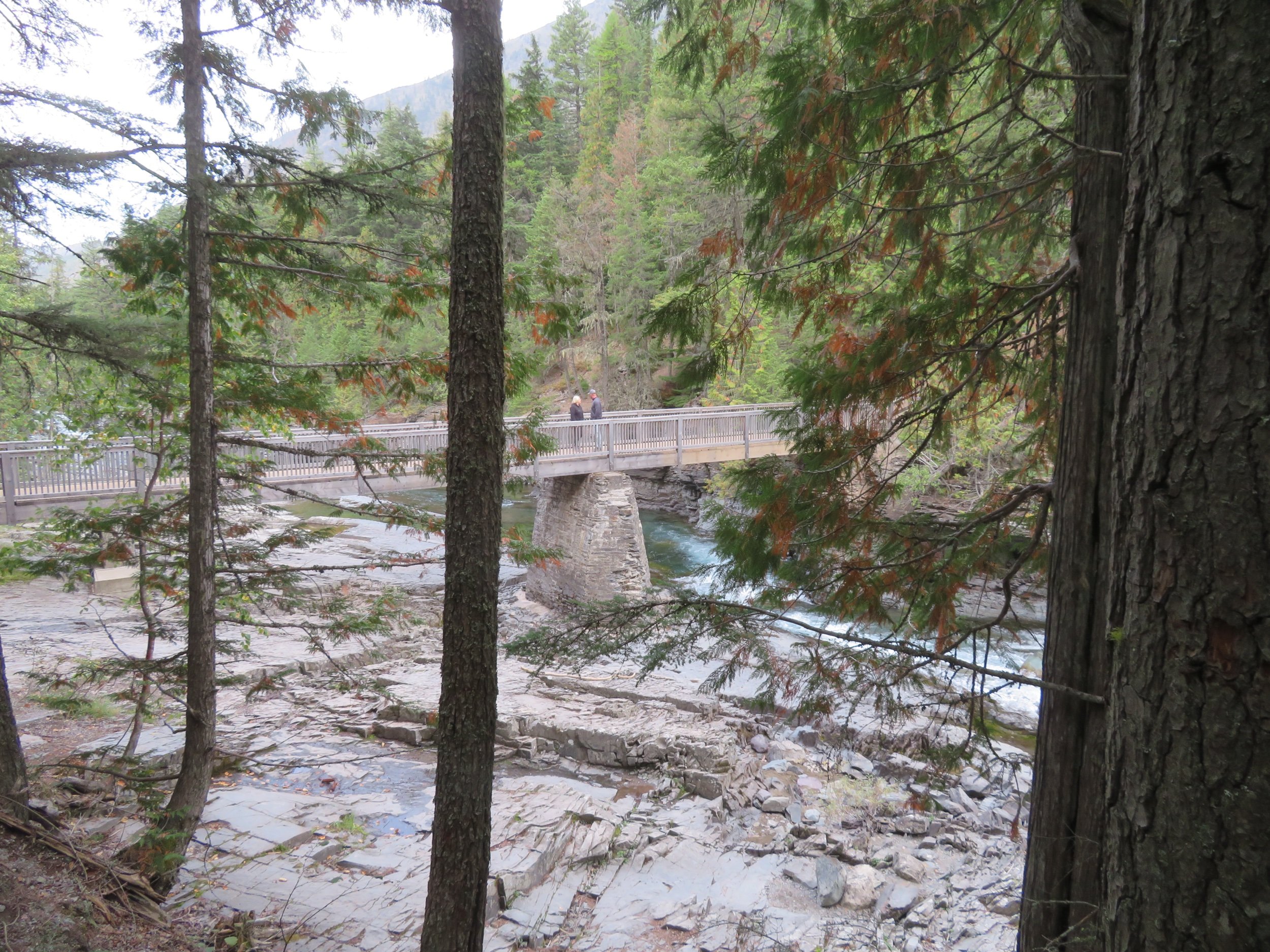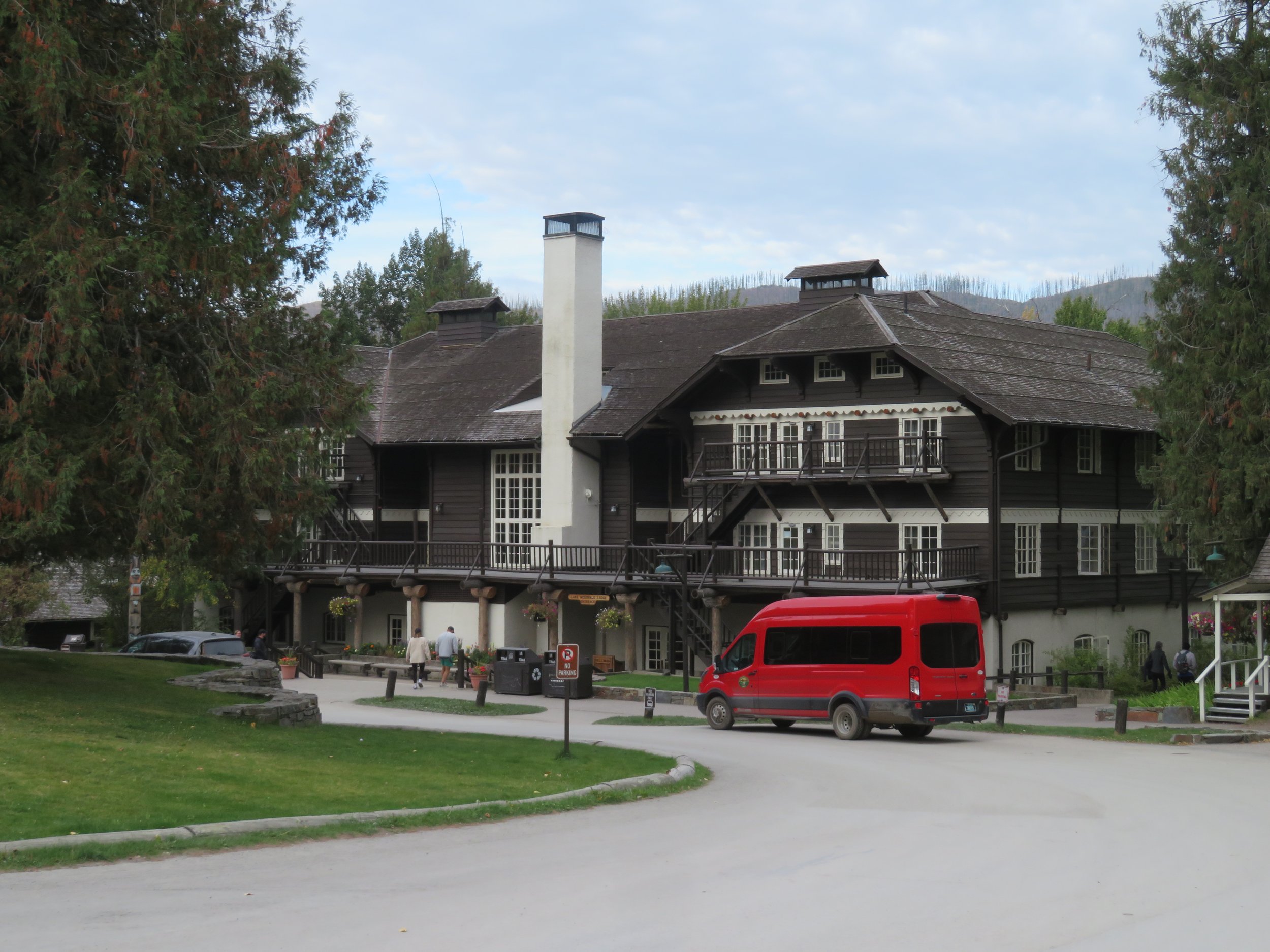Waterton-Glacier International Peace Park - Part 2
/Glacier National Park
We entered the USA at the Chief Mountain border crossing. This is a seasonal border crossing from May through mid-October (0900-1800 only). We were back in Montana, USA and amazing as it might seem, the land looked exactly the same as it did in Canada. Go figure!
Chief Mountain, for which the border crossing is named, is 9070’ and dominates the landscape.
We entered Glacier National Park at the St. Mary East Entrance and headed directly to the St. Mary Campground which is usually reservation-only camping until September 10th, but now offered first come/first serve ‘primitive’ campsites, i.e. no water, vault toilets only at $10/night- $5 with park pass.
We’d read there were 150+ campsites so we weren’t too worried about finding one. When we arrived around 10am, however, we learned that all but one loop was closed which definitely limited the options. We took a turn through and found only four open sites of the 30 total sites available. We lay claim to one and by 11am, the campground was full. Timing’s everything! Many of the other park campgrounds had already closed in early September for the season.
We walked a 1/2 mile trail threading our way through three other campgrounds to the St. Mary Visitor Center.
Fallen leaves crunched beneath our feet… a sure sign of autumn. The last of the purple fleabane was attracting the last of the yellow sulphur butterflies. Another life cycle nearing its end.
We watched a movie about glaciers. Traditionally, the Kootenai referred to Glacier National Park as Ya·qawiswit̓xuki, meaning "the place where there is a lot of ice."
According to the park brochure, “At the end of the Little Ice Age around 1850, there were about 80 glaciers in what would eventually become Glacier National Park. Based on aerial imagery from 2015, there were 26 named glaciers that met the size criteria of 0.1 km², nine fewer than in 1966. Of the 26 remaining in 2015, some may now already be too small to be considered glaciers. In addition to the roughly two dozen named glaciers that are monitored by the U.S. Geological Survey, the park also hosts several unnamed glaciers, about a dozen rock glaciers, and many snow fields.” One source indicates that all the glaciers in the park might be gone by 2030, but another indicates that they don’t really know. A sad and alarming thought that a park named ‘glacier’ would have no glaciers.
We attended a ranger talk in the evening focused on endangered species in the park including the white bark pine. Disappearing glaciers… endangered species… very uplifting topics. There was also discussion of new views on wildfires… they’re a natural phenomenon (unless a human is involved) and many times good for the forests.
We left the campground early the next morning traveling along the 32-mile Going-to-the-Sun Road. Vehicles over 21’ are not allowed on the road due to its extremely sharp turns and narrow lanes. I regaled David with a rousing chorus of “I’ll Follow the Sun”. He did not request a reprise though I offered.
The last time we were at Glacier NP was during Covid and this section of the road was closed as was the Canadian border crossing, so this was all new territory. We observed great views of St. Mary Lake and tiny Wild Goose Island.
Jackson Glacier is shrinking, but it is still visible.
Views of Heavy Runner Mountain were stupendous as we headed through the east mountain tunnel.
We were looking forward to stopping at Logan Pass. We’d hiked from there last time and were hoping to do it again, however the parking lot was full, a line of hopeful cars was waiting, and the entire area was swamped with visitors (just like us?). Our love of national parks only slightly trumps our aversion to crowds. We reluctantly skipped Logan Pass and continued along the road.
The park administration is trying to limit the congestion we saw along the road, at key viewpoints, and in the parking lots. Timed entry reservations are required at the west entrance between late May and early September. The east entrance requires a reservation between July 1st and September 10. The park is open 24 hours/day and visitors can still enter before 0600 and after 1500 without a pass even when reservations are required.
Free shuttles are available as well as the park’s iconic red buses aka Red Jammers, which offer tours in vintage vehicles from the 1930s (~$55-$115/pp depending on route and tour length). Both options provide transportation to key viewpoints thus reducing private vehicle traffic. The park’s fleet of 33 Red Jammers, by the way, is purported to be the world’s oldest touring fleet.
The road west after Logan Pass is particularly tortuous and narrow with hairpin turns and abrupt drop-offs to hundreds of feet below on one side and sheer cliffs on the other. We noted several scrape spots and occasional bits of paint on the cliff side of the narrow road.
We arrived at the Avalanche Creek Campground in mid-afternoon and claimed our site. The campground was nice enough with flush toilets, fresh water, trash bins, and wooded sites plus the usual site amenities (picnic table, fire ring, tent pad). The toilets, however, had no lighting which made after dark and before sun-up forays a challenge requiring a flashlight and dexterity. The campground was closing for the season the very next day, hence the reason we could only secure a one-night stay.
With easy access from the campground, we walked the short 1-mile Trail of the Cedars. This forested area is primarily red cedar, black cottonwood and western hemlock. It smelled earthy and fresh as we ambled along. A packed dirt trail wandered through the tall trees and boardwalks provided access over marshy areas.
We spotted a yellow-bellied sapsucker in a nearby tree and managed a photo as a he flitted around from one spot to another looking for an afternoon snack.
Back to the campground, pasta for dinner, a little writing, a card game ( it’s not really a competition, but I won), a little reading and a quiet night’s sleep.
We were up early hoping to walk the Johns Lake Loop Trail, but it was closed. Instead we walked over the McDonald Creek via a footbridge for a view of the the Sacred Dancing Cascade.
A solid stream of cars met us as we tried to get a glance of the McDonald Lake Lodge, a national historic site. The lodge opened in 1914 and is considered one of the finest examples of Swiss Chalet-style hotels still remaining in the USA.
We took a quick 1.5 mile walk on the Oxbow Trail where spotted a gadwall dabbing for a snack.
We stopped briefly at the Apgar Visitor’s Center and Village near the west entrance (or exit in our case). It was swarming with people. We took a quick walk through, bought nothing, and headed out of the park. A pleasant but less than satisfactory national park visit. On the one hand, we love seeing people out and enjoying our national parks. On the other hand, we really dislike hordes of people all trying to enjoy the same sights at the same time. The answer is probably visiting during the off-season… and stop complaining.
We exited the park and headed for Whitefish. Using points for a free room, we splurged on a hotel room at the Pine Lodge of Whitefish… lovely. Chinese take-out and a Netflix movie… delightful decadence!
There are so many national parks along our route… why not visit them all? Talking about crowds, next up…Yellowstone National Park… Old Faithful, here we come!



